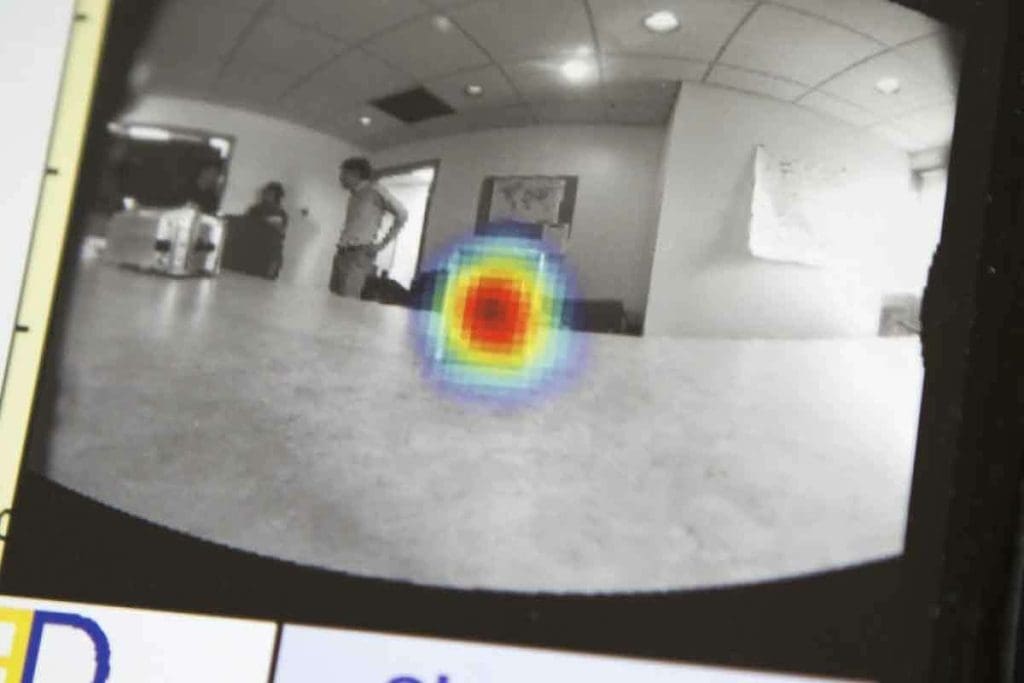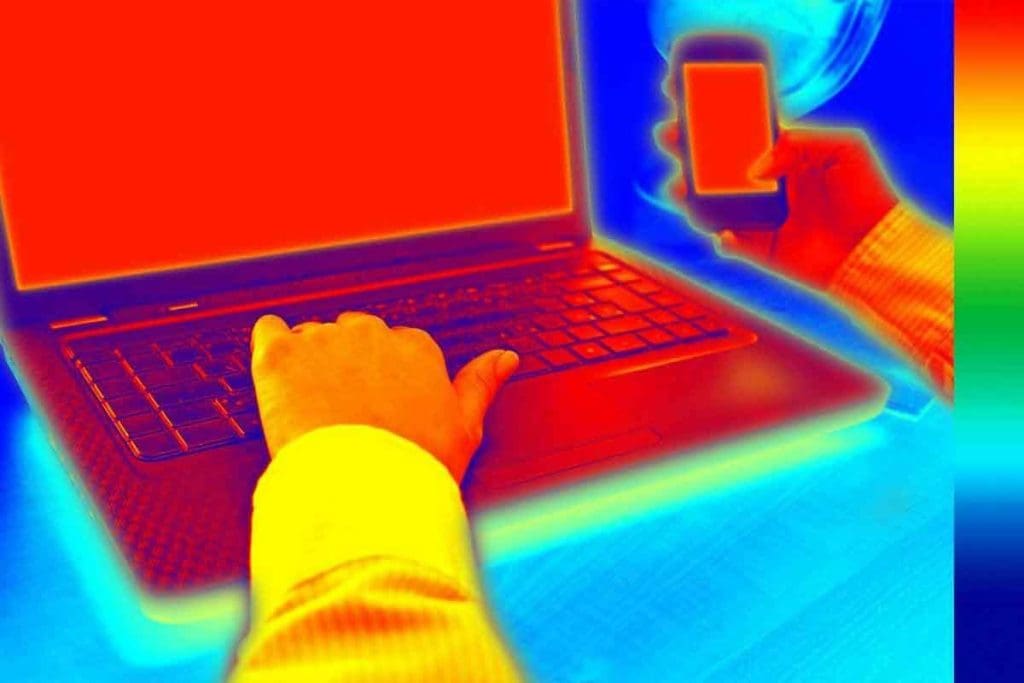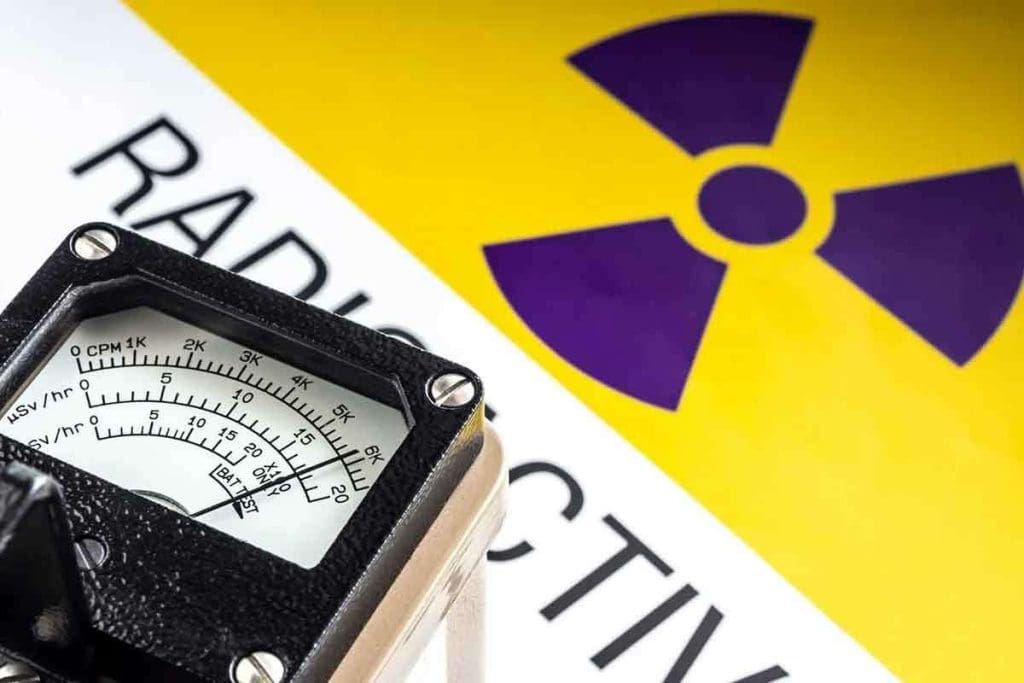Last Updated on November 27, 2025 by Bilal Hasdemir

Radiation is a form of energy that comes out as waves or particles from a source.
We are all around radiation, most of which we can’t see. It’s a natural part of our world. Knowing about it is very important.Learn can you see radiation, how scientists detect it, and why human eyes can’t see most forms of radiation.
The word “radiation” means energy sent out into space or through a material. This energy can be many things, like visible light. But only visible light is something we can see.
Key Takeaways
- Radiation is energy emitted in the form of waves or particles.
- Most radiation is invisible to the human eye.
- Understanding radiation is key for diagnosing illnesses and dealing with environmental dangers.
- Liv Hospital offers top-notch care and advice on radiation safety and ethics.
- Radiation is everywhere in our environment.
What Is Radiation? Understanding the Basics

Radiation is all around us, from the light we see to the treatments in hospitals. It’s important to know that radiation has many types, some safe and others not. Understanding this helps us see how it affects our lives.
Definition and Forms of Radiation Energy
Radiation is energy that moves through space from a source. It comes in many forms, like radio waves and X-rays. Ionizing radiation can change atoms, while non-ionizing radiation just makes them move.
Ionizing radiation, like X-rays, can harm our cells and DNA. This makes it dangerous. Non-ionizing radiation, like radio waves, is safer but can cause some harm too.
The Electromagnetic Spectrum Explained
The electromagnetic spectrum is a huge range of energy. It includes everything from radio waves to gamma rays. Visible light is just a small part of it. Knowing about this spectrum helps us see how different types of radiation work.
For example, radio waves help us talk to each other, while X-rays help doctors see inside our bodies. This spectrum is key to understanding radiation.
| Radiation Type | Frequency Range | Common Applications |
| Radio Waves | Low Frequency | Communication, Broadcasting |
| Microwaves | Medium Frequency | Heating, Wireless Communication |
| Visible Light | Medium Frequency | Illumination, Vision |
| X-rays | High Frequency | Medical Imaging |
| Gamma Rays | Very High Frequency | Cancer Treatment, Sterilization |
Radiation Meaning in Everyday Context
We all get exposed to radiation every day. For example, cosmic radiation comes from space. Radon gas in our homes is another source.
Medical tests like X-rays also use radiation. Knowing about these sources helps us stay safe.
“Radiation is a natural part of our environment, and understanding its various forms and sources is key to harnessing its benefits while minimizing its risks.” –
Learning about radiation helps us stay safe. It’s important to know how it works and its uses. This way, we can enjoy the benefits of radiation while avoiding its dangers.
Can You See Radiation? The Visibility Question

We can’t see most kinds of radiation. But, there’s one kind we all know. Humans can’t directly detect or feel most radiation. Yet, technology lets us measure and detect different types of radiation.
Visible Light as a Form of Radiation
Visible light is a special kind of radiation. It’s the part of the spectrum we can see. This lets us see our world around us. Our eyes can see light with wavelengths from violet to red.
Why Most Radiation Types Remain Invisible
Most radiation types are invisible to us. This includes X-rays, gamma rays, and particles like alpha and beta. They are too high or too low in energy for our eyes to see. For example, X-rays and gamma rays are too energetic and invisible to us.
Indirect Ways to Visualize Radiation Effects
We can’t see most radiation directly. But, we can see its effects in other ways. Geiger counters can show us radiation levels. Scintillation detectors and photographic plates can also detect radiation. Medical imaging uses X-rays and PET scans to see inside our bodies.
| Radiation Type | Visibility | Detection Method |
| Visible Light | Visible | Human Eye |
| X-rays, Gamma Rays | Invisible | Geiger Counter, Scintillation Detector |
| Alpha, Beta Particles | Invisible | Geiger Counter, Cloud Chamber |
“The discovery of X-rays by Wilhelm Conrad Röntgen in 1895 marked a significant milestone in the history of physics and medicine, enabling the visualization of internal structures without surgery.”
Knowing about radiation and how to detect it is key. It helps us use radiation safely in medicine and industry. Technology helps us measure and detect radiation, keeping us safe.
Types of Radiation: From Harmless to Hazardous
The world of radiation is vast and includes both non-ionizing and ionizing types. Each type has its own energy level and health risks. We sort radiation into these categories based on their energy and ability to ionize atoms.
Non-Ionizing Radiation Examples
Non-ionizing radiation has lower energy levels. It includes radio waves, microwaves, and infrared radiation. These are mostly safe and used in many ways, like in communication and heating.
- Radio Waves: Used in broadcasting and telecommunications.
- microwaves:> Employed in microwave ovens and some communication devices.
- Infrared Radiation: Used in heating and thermal imaging.
Ionizing Radiation Types
Ionizing radiation has enough energy to remove electrons from atoms, creating ions. This includes X-rays, gamma rays, alpha particles, and beta particles. It’s used in medicine, industry, and nuclear energy but can be dangerous if not handled right.
| Type of Ionizing Radiation | Characteristics | Common Applications |
| X-rays | High-energy electromagnetic radiation | Medical imaging |
| Gamma Rays | High-energy electromagnetic radiation | Cancer treatment, sterilization |
| Alpha Particles | High-energy helium nuclei | Nuclear reactors, research |
| Beta Particles | High-energy electrons or positrons | Industrial applications, medical treatments |
Ultraviolet Radiation: The Border Between Non-Ionizing and Ionizing
Ultraviolet (UV) radiation is between visible light and X-rays on the spectrum. It’s mostly non-ionizing but high-energy UV can ionize. The sun and UV lamps emit UV radiation.
Knowing about different radiation types and their uses is key to safety. By understanding these, we can protect ourselves from health risks.
Where Does Radiation Come From? Natural Sources
Radiation is everywhere, coming from the sky and the ground. It’s all around us, a part of our world.
Cosmic Radiation from Space
Cosmic radiation comes from the sun and deep space. It includes high-energy particles like protons. We all get some, but the amount changes with altitude and the sun’s activity.
Terrestrial Radiation in Soil and Water
Terrestrial radiation comes from the Earth’s crust. Radioactive materials like uranium and thorium are there. They decay and release radiation into the air. The amount of radiation varies by the area’s geology.
Radon Gas: The Leading Source of Natural Radiation Exposure
Radon is a radioactive gas from the soil. It builds up in buildings. It’s the main source of natural radiation for most people. High levels of radon are a big health risk, mainly where the soil has a lot of uranium.
Radiation in the Human Body
Our bodies have small amounts of radioactive materials. They come from isotopes like potassium-40 and carbon-14. We get them from what we eat and drink.
Knowing where radiation comes from helps us understand it better. It shows us the importance of being aware and safe. By knowing where it comes from, we can reduce our exposure and lower risks.
Human-Made Radiation Sources in Modern Society
Human-made radiation sources are everywhere in our lives. They are found in healthcare, energy production, and even in things we buy. It’s important to know how they work, their benefits, and any risks they might pose.
Medical Applications: X-rays, CT Scans, and Nuclear Medicine
Medical uses of radiation are huge. Diagnostic imaging techniques like X-rays and CT scans use radiation to see inside our bodies. Nuclear medicine uses tiny amounts of radioactive materials to help diagnose and treat diseases.
These tools have changed healthcare a lot. They help doctors find and treat problems better. But, they also mean more people are exposed to radiation.
Industrial Uses and Nuclear Energy Production
Radiation has many uses in industry. Nuclear power generation is one, where atoms are split to make electricity. This process involves radiation.
Industrial radiography uses gamma rays or X-rays to check materials and welds. It’s key for keeping our buildings and machines safe. But, we must handle it carefully to avoid too much radiation.
Consumer Products That Emit Low-Level Radiation
Some products we use every day give off small amounts of radiation. Smoke detectors have radioactive material to detect smoke. Some lights, like exit signs, use tritium.
| Product | Radiation Source | Exposure Level |
| Smoke Detectors | Americium-241 | Very Low |
| Tritium Exit Signs | Tritium (H-3) | Low |
| Thoriated Tungsten Electrodes | Thorium-232 | Low to Moderate |
Knowing about these radiation sources is key to keeping safe. By understanding and managing radiation, we can protect our health and the environment.
How Geography Affects Radioactive Material Distribution
Geography plays a big role in how radioactive materials spread out. This affects the amount of radiation in different places. The earth’s crust varies, leading to different levels of radioactive elements in different areas.
Regional Variations in Natural Background Radiation
Background radiation levels change a lot from place to place. This is because of the earth’s geology. Places with granite or volcanic rocks have more uranium and thorium, leading to higher radiation levels.
Uranium Deposits and Other Radioactive Minerals
Uranium deposits are a big source of radioactive materials. Areas with lots of uranium in the soil or rocks have more radon. Radon is a radioactive gas that can get into buildings and homes.
Human Activities Creating Radiation Hotspots
Human actions like mining and nuclear power plants can make areas with high radiation. These activities release radioactive materials into the air, raising local radiation levels.
Where Radioactive Exposure Can Occur in Daily Life
People can be exposed to radiation in many parts of their lives. This includes at home, work, or during medical tests. Knowing where radiation comes from and how it spreads can help us reduce our exposure.
Understanding how geography affects radioactive material distribution helps us manage radiation risks better.
Measuring Radiation: Units and Safety Thresholds
To understand radiation risks, knowing how it’s measured is key. Radiation exposure is tracked with various units. Each unit gives insight into how radiation affects us and the environment.
Understanding Radiation Measurement Units
Radiation is measured in sieverts (Sv), rems, and grays (Gy). Sieverts and rems show the biological effect of radiation. Grays measure the dose absorbed. For example, sieverts consider how different tissues react to radiation.
Here’s a breakdown of these units:
| Unit | Description | Example |
| Sievert (Sv) | Measures the biological effect of radiation | Average annual exposure from natural sources: 2.4 mSv |
| Rem | Older unit measuring biological effect; 1 Sv = 100 rem | Typical chest X-ray: 10 μrem |
| Gray (Gy) | Measures absorbed radiation dose | 1 Gy = 100 rad; typical CT scan: 10 mGy |
What Constitutes Dangerous Radiation Levels
High levels of ionizing radiation are very dangerous. Exposure to acute doses above 0.5 Gy can cause immediate health problems, like radiation sickness. Even lower doses over time can increase cancer risk.
Tools and Methods for Detecting Different Radiation Types
Many tools help detect and measure radiation. Geiger counters find gamma and X-rays. Scintillators detect radiation through light. Dosimeters measure personal exposure. The right tool depends on the radiation type and setting.
Background Radiation vs. Acute Exposure Levels
It’s important to know the difference between background radiation and acute exposure. Background radiation is always present but usually low. Acute exposure means higher doses in a short time. Knowing this helps us understand the risks of different radiation situations.
We need to know the levels of radiation that are safe or dangerous. By understanding measurement units and detection tools, we can better handle radiation risks in different places.
Why Radiation Is Dangerous and Sometimes Deadly
Ionizing radiation is a serious health hazard. It can damage living tissues, leading to health issues. We will look at the dangers of radiation, focusing on its biological effects and health risks.
How Ionizing Radiation Damages Cells and DNA
Ionizing radiation has enough energy to remove tightly bound electrons from atoms. This creates ions and can damage DNA in cells. If DNA is altered, it can lead to cancerous changes if the cell survives and divides.
The damage caused by ionizing radiation to cells and DNA is complex. It involves breaking DNA strands, which can lead to genetic mutations. These mutations can disrupt normal cellular function, potentially leading to cancer.
Acute Radiation Syndrome: Symptoms and Progression
Acute Radiation Syndrome (ARS) occurs after exposure to a high dose of ionizing radiation over a short period. Symptoms include nausea, vomiting, diarrhea, fatigue, and damage to the bone marrow, lungs, or gastrointestinal system. We discuss the progression of ARS and its severity levels.
The severity of ARS depends on the dose and duration of radiation exposure. Higher doses can lead to more severe symptoms and a worse prognosis. Understanding ARS symptoms and progression is key for proper medical care.
Long-Term Health Risks: Cancer and Genetic Effects
Exposure to ionizing radiation increases the risk of developing cancer. The risk is higher for those exposed at a younger age and to higher doses. There is also evidence that ionizing radiation can cause genetic effects, potentially affecting future generations.
The long-term health risks of radiation exposure are a significant concern. Cancer risk assessment models estimate the likelihood of cancer development after radiation exposure. We also consider the genetic effects and their implications.
Factors That Influence Radiation Damage Severity
Several factors influence the severity of radiation damage. These include the dose and duration of exposure, the type of radiation, and individual sensitivity. We explore these factors in detail to understand their impact on health risks.
The dose and duration of radiation exposure are critical in determining its effects. Higher doses and longer exposure times increase health risks. The type of radiation and individual sensitivity also play significant roles.
Conclusion: Understanding and Respecting Radiation in Our World
We’ve looked into the complex world of radiation. We’ve covered what it is, its types, and where it comes from. Knowing about radiation helps us see its place in our world and its dangers to our health.
Radiation is everywhere, from natural sources like cosmic rays and radon gas to things made by humans. The Earth’s atmosphere shields us from harmful X-rays and most ultraviolet rays. But, we must know about ionizing radiation, which can harm cells and DNA, causing serious health problems.
To learn more about the electromagnetic spectrum and its connection to radiation, check out NASA’s Science page. By understanding why radiation is dangerous and how to reduce our exposure, we can make our world safer and healthier for all.
FAQ
What is radiation, and where does it come from?
Radiation is energy from many sources. This includes cosmic rays from space, earth’s crust, and human-made sources. These include medical uses, industry, and products we use every day.
Can you see radiation?
Most radiation is invisible. But, visible light is a form of radiation. We can’t see other types directly. Yet, we can use technology to detect and show their effects.
What are the different types of radiation?
There are non-ionizing types like radio waves, microwaves, and infrared. Ionizing types include X-rays, gamma rays, and alpha, beta particles. Ultraviolet radiation falls between these two categories.
How is radiation measured, and what are the units used?
We measure radiation with units like sieverts, rems, and grays. These help us understand how much radiation we’re exposed to and the risks it poses.
What are the dangers of radiation, and why is it sometimes deadly?
Ionizing radiation can harm cells and DNA. This can lead to acute radiation syndrome, long-term health issues like cancer, and even death in extreme cases.
How does geography affect radiation distribution?
Geography affects where radioactive materials go. This leads to different levels of natural background radiation in different areas. Human activities and certain minerals can also create hotspots.
What are the sources of natural radiation exposure?
Natural sources include cosmic rays, earth’s radiation, radon gas, and radiation in our bodies.
How is radiation used beneficially in society?
Radiation helps in medicine with X-rays, CT scans, and nuclear medicine. It’s also used in energy production and in products that emit low-level radiation.
What are the risks associated with different types of radiation?
Ionizing radiation is more dangerous than non-ionizing radiation. The risks depend on the dose, how long you’re exposed, and the type of radiation.
How can we detect and visualize radiation effects?
We use tools like Geiger counters, spectrometers, and imaging technologies. These include X-ray and gamma-ray cameras to see radiation effects.
Reference
- Stanford University Environmental Health & Safety. Your Eyes As Radiation Detectors. http://www.science20.com/cool_science/your_eyes_as_radiation_detectors-162631






